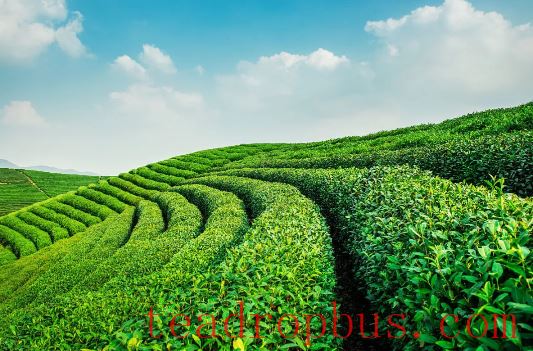In the world of tea, the saying “the best teas come from high mountains shrouded in clouds and mist” is deeply ingrained, and many of our country's traditional premium tea-growing regions are often found at high altitudes. However, a crucial question arises: does higher altitude necessarily mean better tea quality? In today's complex and mixed tea market, it's easy to be misled by exaggerated claims, much like being lost in a fog, unable to see the truth clearly. For newcomers to the tea world, they may be swayed by unscrupulous merchants, leading to the mistaken belief that “higher altitude equals better tea.”

In reality, there is a significant difference in the quality of teas produced at different altitudes. The impact of altitude on tea quality primarily stems from variations in temperature. Generally speaking, for every 100 meters increase in altitude, the annual average temperature decreases by about 0.5°C, and the diurnal temperature range also increases.
The microclimate of tea gardens changes with altitude. At higher elevations, there is abundant cloud cover, higher humidity, and pronounced diurnal temperature differences, along with intense sunlight. These environmental conditions are conducive to the biosynthesis of nitrogen-containing compounds in tea plants. They help maintain high concentrations of soluble nitrogenous compounds in new shoots, promoting the formation and accumulation of amino acids and aromatic compounds. The cloudy and humid environment not only inhibits the synthesis of cellulose, keeping buds and leaves tender and fresh, but also facilitates an increase in scattered sunlight and blue-violet light, enhancing the diffuse light effect and increasing photosynthetic intensity, which promotes the formation of aromatic compounds.
However, it's important to note that different types of tea have different optimal environments for developing their aromas. For example, Green Tea tends to showcase its fresh and brisk character at relatively lower altitudes. Higher temperatures in these areas promote the formation of catechins and other substances in green tea, resulting in a fresher taste. For Oolong Tea, a moderate altitude is more suitable. Under such conditions, oolong tea can accumulate rich aromatic components and develop unique flavors.
Taking Yunnan's tea-producing areas as an example, both the climate and altitude provide ideal conditions for tea growth, and indeed, many renowned high-quality teas are produced here. The altitude of tea-producing areas in Yunnan generally ranges from 800 to 2,200 meters. Aside from Lincang Xigui, which grows at around 900 to 1,100 meters, the most premium mountain teas in Yunnan are typically found at altitudes between 1,300 and 1,800 meters, particularly concentrated around 1,500 meters. This doesn't mean that higher is always better, as excessively high altitudes can lead to lower temperatures, which are detrimental to the accumulation of catechins and other internal substances in the tea.
For instance, tea plants growing at extremely high altitudes may experience prolonged growth cycles due to low temperatures, resulting in lower yields. Low temperatures can also affect photosynthesis and respiration in tea plants, impacting the synthesis and accumulation of nutrients in the leaves. Additionally, extreme weather conditions such as strong winds at very high altitudes can negatively affect the growth of tea plants and the quality of the tea.
Therefore, the quality of tea cannot be determined solely by altitude. Each type of tea has its optimal growing environment, which requires a comprehensive consideration of factors such as climate, soil, and topography. Just as each person has a different constitution and thus different tea preferences, choosing the right tea for different seasons can be a delightful experience.
In spring, when all things come back to life and Metabolism gradually becomes more active, floral teas such as Jasmine tea or rose tea are suitable. The fragrance of floral teas dispels the dullness of winter, bringing freshness and joy, helping to regulate emotions and uplift spirits.
In summer, when it is hot and the body sweats profusely, green teas like Longjing and Biluochun are ideal choices. Green tea has cooling properties that quench thirst and refresh the body. Its rich catechins and vitamins help fight free radicals and protect health.
In autumn, when the climate is dry, milder teas like oolong tea are recommended. Oolong tea has a rich aroma and a smooth taste, soothing the throat and alleviating discomfort caused by dryness.
In winter, when it is cold and the body needs warmth and nourishment, black tea and dark tea with higher fermentation levels are excellent choices. They are warming and can warm the stomach and dispel cold, strengthening the body's resistance.
In summary, choosing the right tea for oneself is not only a matter of pampering one's taste buds but also a form of caring for one's health. With tea as a companion, we can savor the beauty of life and feel the tranquility and peace of time.
Let's abandon those one-sided notions and explore the mysteries of tea with a more scientific and rational attitude, savoring the unique charm and endless allure of every Cup of tea.